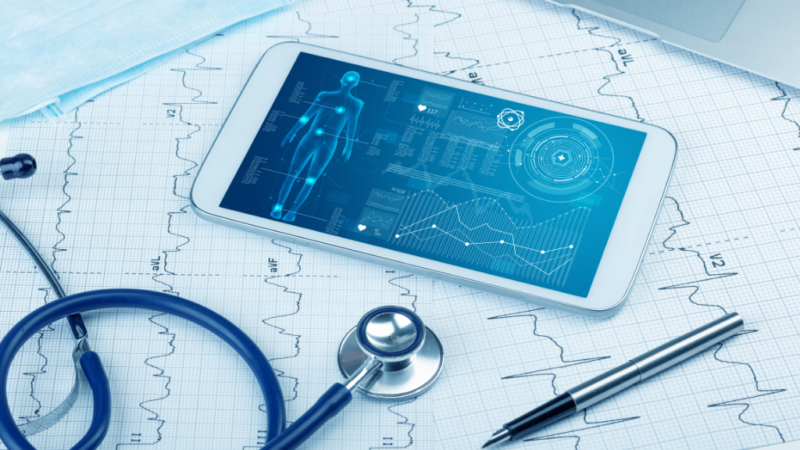Digital Health is fast emerging and is growing rapidly. New technologies such as telemedicines, Artificial Intelligence (AI) and Machine Learning (ML), Wearables for Glucose Monitoring, ECG etc are constantly evolving. Healthcare regulators across the world are devising regulations to help every country evolve with the transformation. India, has also been devising rules and regulations to help Medical Device Manufacturers commercialize their software in India and be compliant with the rules as well. This article talks about the registration and invoicing requirements for Software as Medical Device in India.
The Indian FDA (CDSCO) had released a notification in February 2020 that Software would also be considered as a Medical Device if they are used for any of the below categories –
- Prevention, monitoring, treatment,diagnosis or alleviation of any disease or disorder
- Assistance for any injury or disability
- Examination, modification, replacement or support of the Study
- Supporting or sustaining life
- Disinfection and Control of conception
In September 2021, CDSCO released official guidelines on the classification of SaMD’s. It is categorized into 4 risk categories such as low-risk (Class A), low-moderate risk (Class B), moderate risk (Class C), and high-risk (Class D) devices. The below are some examples of of the same –
- Class A SaMD – Continuous glucose monitor retrospective data analysis software is intended to analyze and correlate retrospective data from a continuous glucose monitoring device.
- Class B SaMD – A software, which is designed to process data obtained from an ECG recorder with real-time analysis. The resultant data are provided for diagnosis, etc.
- Class C SaMD – An angiographic coronary vascular physiologic simulation software device is intended to aid in the identification of functionally significant cardiovascular disease.
- Class D SaMD – In India, the CDSCO has not yet identified any SaMDs posing high risk to patients
Licensing Requirements
The SaMDs, once classified, have to be registered as per the standard Medical Device Registration Pathway. The pathway to registration must comply with the medical device risk category and can sell via three options – (1) Distributor (2) Independent Authorized Agent and (3) Indian Subsidiary. Basically this means that you can sell only if you have an Indian company holding your license. Foreign manufacturers of SaMD’s need to work with companies having a Valid Drug Sales License (Form 20b/21b) allowing them to invoice them for their products. While importing and warehousing do not apply to SaMD without physical form, the invoicing requirement is still in full effect.
Tax Compliances
In general, India is considered a high tax environment with complex requirements, and when two countries are involved, it becomes even more complicated. Purchase of software for resale without any significant modifications attract TDS as per Double Taxation Avoidance Agreement (DTAA) or Section 195 of the Income Tax whichever is beneficial to the service recipient.
- Under DTAA rules, the relevant DTAA between India and the country of the service provider is to be considered and the rates per the Article – “Fees for Technical Services” is to be applied. The rate under this is also dependent on whether the service provider has a permanent establishment in India or not.
- Under Income tax rules, section 195 of the Act applies and as per the act – TDS is to be deducted at the effective rate of 10.4% (10% tax plus 4% cess).
Since TDS on Non-Resident applies, a certificate from the Chartered Accountant and Form 15 CA and Form 15CB have to be duly submitted at the time of remittance of proceeds against the service received. Additionally, in turn when the service is being invoiced to the local buyer here in India, no TDS is required to be deducted as per notification no. 21/2012 [F.No.142/10/2012-SO(TPL)] S.O. 1323(E), DATED 13-6-2012 of the Central Board of Direct Taxes. However the supplier in India has to duly declare in their invoice.
Additional Regulations
The Software as a Medical Device (SaMD) to be marketed in India is subjected to and must comply with the following regulations:
- Gazette S.O. 648(E) from February 11, 2020
- Medical Device Rules from 2017
- ISO 13485:2016 – Quality Management Systems
- ISO 14971:2019 – Implementation of Risk Management to Medical Devices
Additionally, the SaMD’s also need to comply with applicable global standards such as:
- IEC 62304 – This defines the lifecycle of a SaMD
- IEC 62366-1 – This talks about man-machine interface ergonomics
- IEC 60601-1 – This refers to the software which is embedded in the hardware of a Medical Device
- IEC 82304-1 – This applied to standalone SaMD’s
- IEC 81001-5-1 – This talks about Cybersecurity
Why work with Morulaa
If you would like to explore options for selling your SaMD or other medical devices in India, please reach out to us to learn more about the various options available to you to make your ongoing business smoother or start your sales in a new market.

